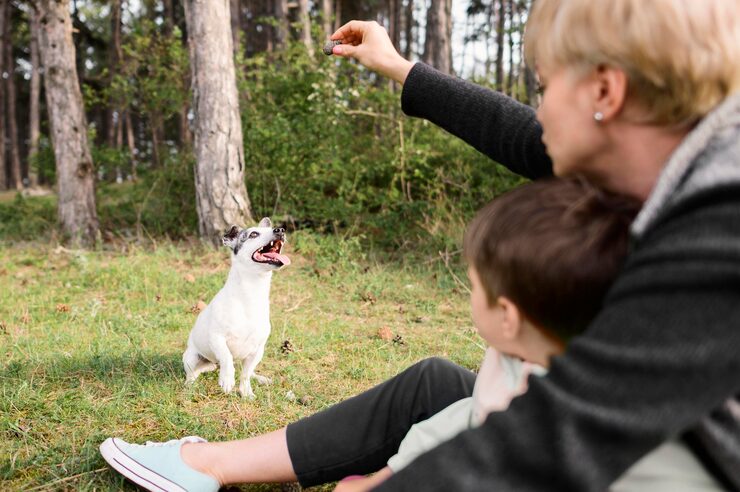Training a dog is one of the most rewarding experiences for any pet owner, but it also requires patience, structure, and a strong commitment. Dogs thrive when they understand expectations, and consistency is the key element that helps them learn. Without consistent guidance, commands become confusing, routines lose meaning, and behaviours take longer to develop or correct. Whether teaching basic obedience or addressing problem behaviours, consistency ensures that dogs build clear associations between actions and responses. Owners who remain steady in their approach often see faster progress and stronger bonds with their pets. This reliability not only creates discipline but also makes dogs feel secure, as they know what is expected of them in every situation. Establishing a consistent environment where commands, rewards, and boundaries remain stable and predictable lays the foundation for long-term success in training. The role of consistency cannot be overstated, as it supports both learning and trust.
The Crucial Role of Consistency in Dog Training
- Establishing Clear Communication
Consistency is vital for establishing communication between dogs and their owners. Every time a command is given, the dog learns to associate a word, tone, or gesture with a specific action. If an owner uses “sit” one day and “sit down” the next without reinforcement, the dog may become confused and respond inconsistently. Clear and repetitive cues help the dog understand exactly what behaviour is expected. Over time, this repetition builds recognition and confidence, allowing dogs to respond more quickly and reliably. Owners who remain patient and consistent also avoid sending mixed signals that could delay progress. Dogs thrive in environments where communication is predictable, and once they understand a command clearly, they are more eager to repeat the desired action. Structured communication not only speeds up training but also builds trust, as the dog knows their owner’s cues will always mean the same thing.
- Reinforcing Behaviour and Through Routine
An intense routine is another way consistency plays a vital role in dog training. Dogs are creatures of habit, and when training sessions occur at regular times, they quickly adapt and begin anticipating the lessons. This predictability makes it easier for them to remain focused and engaged. Consistent routines also help reinforce behaviours because dogs learn that specific actions, such as sitting politely before meals or waiting at doors, are always required. Over time, these routines become habits that are second nature. Training schools, such as H.K. Dog Training, often emphasize routines as part of their programs, showing owners how daily repetition solidifies learned behaviors. Without consistent routines, dogs may slip into undesirable habits or fail to generalize lessons across different settings. Structured training woven into daily life creates stability, making it easier for both dogs and owners to enjoy smoother interactions while building long-term obedience.
- Preventing Confusion and Building Trust
One of the challenges owners face when training is inconsistency, which can easily lead to confusion. If a dog receives praise for jumping up one day but is scolded for the same behaviour the next, they cannot understand what is acceptable. Inconsistent responses leave dogs uncertain about what to expect, often resulting in stress or stubborn behaviour. Consistency eliminates this uncertainty, providing clear guidelines that the dog can rely on. When dogs know exactly which behaviors are rewarded and which are discouraged, they feel more secure and are more willing to learn. Trust is built through this reliability, as the dog recognizes that their owner’s cues and responses are dependable. Over time, this creates a stronger bond where the dog is more willing to cooperate and less likely to test boundaries. Consistency, therefore, goes beyond training—it creates an environment of trust and understanding that benefits the relationship as a whole.
- Long-Term Success Through Consistent Reinforcement
Training does not end once a dog learns a command; it requires reinforcement to ensure behaviours remain strong over time. Consistency in reinforcing learned behaviours is essential, as dogs may forget or regress if rules are not upheld. For example, if a dog is trained not to beg at the table but occasionally receives scraps, the behaviour will likely return. Trainers and owners must maintain consistency in rewards and corrections to keep behaviours intact. Long-term success also comes from applying learned behaviours in different contexts, such as practicing commands at home, in the park, or during walks. By keeping expectations consistent across environments, dogs learn to generalize behaviors and respond reliably, regardless of where they are. This reinforcement helps dogs maintain discipline while also preventing bad habits from resurfacing. Ultimately, consistent reinforcement ensures that training is not temporary but becomes a lasting part of the dog’s daily life.
Consistency is the foundation of practical dog training, shaping communication, routines, trust, and long-term success. By using the same commands, reinforcing routines, and maintaining predictable expectations, owners create an environment where dogs can learn quickly and confidently. A lack of consistency, on the other hand, leads to confusion, frustration, and regression, undermining progress. When applied consistently, obedience training not only improves obedience but also strengthens the bond between dogs and their owners. Training becomes less about correction and more about cooperation, as dogs begin to understand and trust their owner’s guidance. Over time, these consistent practices turn into habits that make daily interactions smoother and more enjoyable. The role of consistency in training extends far beyond teaching tricks—it establishes a framework for lifelong communication, trust, and companionship. For owners seeking lasting results, maintaining consistency is the most reliable path to success in raising a well-behaved and happy dog.



